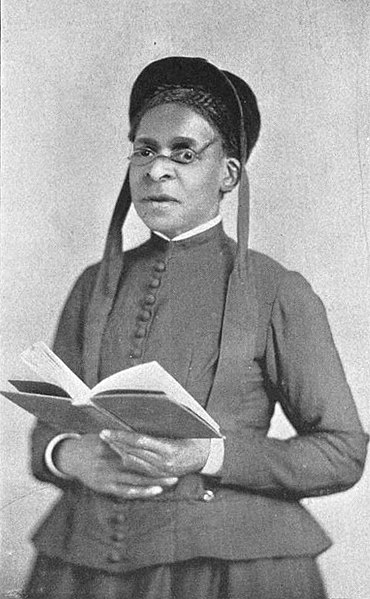Hannah Tatum Whitall Smith was a lay speaker and author in the Holiness movement in the United States and the Higher Life movement in the United Kingdom. She was also active in the women's suffrage movement and the temperance movement.
Hannah Whitall Smith
Hannah Whitall Smith at the Broadlands Conference - central figure from a painting by Edward Clifford
The Holiness movement is a Christian movement that emerged chiefly within 19th-century Methodism, and to a lesser extent influenced other traditions such as Quakerism, Anabaptism, and Restorationism. The movement is historically distinguished by its emphasis on the doctrine of a second work of grace, which is called entire sanctification or Christian perfection. Churches aligned with the holiness movement additionally teach that the Christian life should be free of sin. For the Holiness movement, "the term 'perfection' signifies completeness of Christian character; its freedom from all sin, and possession of all the graces of the Spirit, complete in kind." A number of evangelical Christian denominations, parachurch organizations, and movements emphasize those beliefs as central doctrine.
An engraving of a Methodist camp meeting in 1819 (Library of Congress)
Henry Clay Morrison, a Methodist evangelist and founder of Asbury Theological Seminary
Julia A. J. Foote, an elder in the African Methodist Episcopal Zion Church, preached Christian holiness in the pulpits of her connexion. Her autobiography has the theme of entire sanctifiation interwoven in it and concludes with "How to Obtain Sanctification."
Grace Wesleyan Methodist Church is a parish church of the Allegheny Wesleyan Methodist Connection, one of the largest denominations in the conservative holiness movement, and is located in Akron, Ohio.






